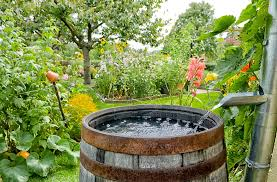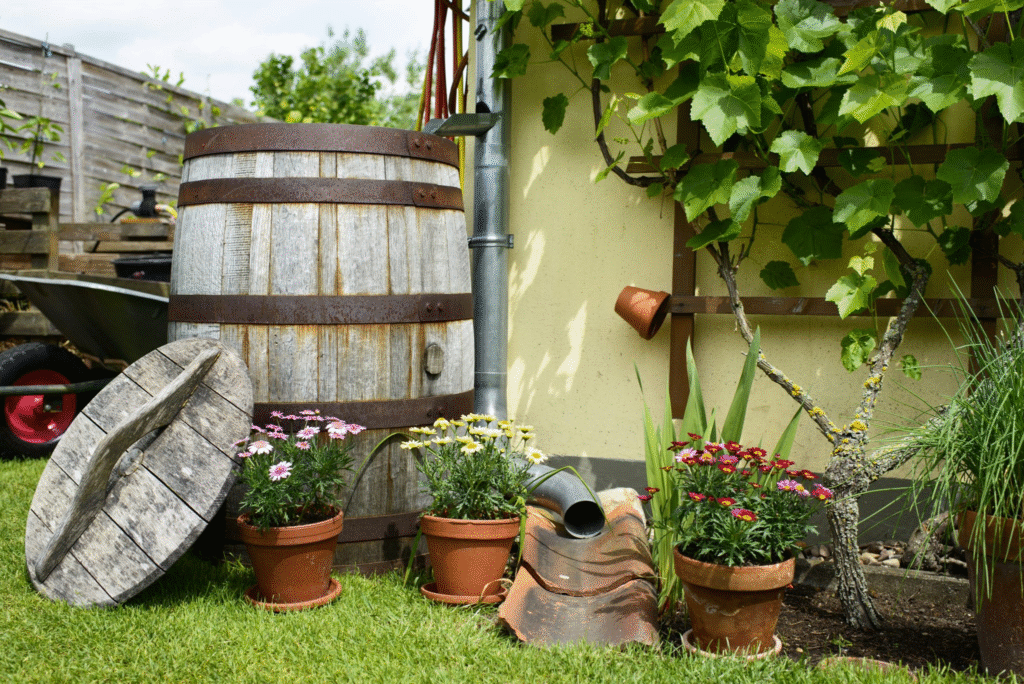Now Reading: Simple Rainwater Tricks That Save Water and Cut Bills 2025
-
01
Simple Rainwater Tricks That Save Water and Cut Bills 2025
Simple Rainwater Tricks That Save Water and Cut Bills 2025

Table of Contents
As climate change continues to affect rainfall patterns and freshwater sources, the need to use water wisely has become more important than ever. One of the easiest and most eco-friendly methods of saving water is to collect and reuse rainwater. This age-old practice is making a comeback, not just in rural areas, but also in cities across the world.
From watering your garden to flushing toilets and even cleaning floors, rainwater can be reused in many simple ways. With the right tools and a bit of effort, anyone can become a water saver and contribute to a better, more sustainable future.
Why Reuse Rainwater?

Rainwater harvesting means collecting the rain that falls on rooftops or open areas and storing it for later use. This method reduces your need to use treated drinking water for everyday tasks.
There are several benefits to reusing rainwater:
1. Save Money on Water Bills:
By using stored rainwater for washing cars, watering plants, or flushing toilets, you reduce the amount of water you take from your main supply. This can lead to lower monthly water bills.
2. Conserve Freshwater Resources:
Only 3 percent of the world’s water is freshwater. Out of that, a major portion is locked in ice or underground. By using rainwater, we reduce pressure on rivers, lakes, and groundwater sources.
3. Avoid Water Shortages:
Many cities experience water cuts during dry seasons. Rainwater collected during wet months can help you stay water-safe during dry periods.
4. Reduce Flooding and Soil Erosion:
Collecting rainwater also prevents excess water from running off and damaging roads, gardens, and drainage systems.
5. A Greener Lifestyle:
Reusing water is an environmentally conscious choice. It reduces the energy needed to treat and pump water and lowers your carbon footprint.
How to Collect Rainwater at Home
You don’t need to be a professional to start harvesting rainwater. Here are some simple ways anyone can collect rainwater:
1. Install a Rain Barrel:
Place a barrel or drum under your rooftop gutters. When it rains, water flows from the roof into the barrel. Use a mesh cover to keep out leaves and insects.
2. Use a Rooftop Rainwater Harvesting System:
This system collects water from rooftops and channels it into a storage tank through pipes and filters. These setups are ideal for homes, schools, and office buildings.
3. Create a Rain Garden:
If you have a yard or garden, create a shallow basin where rainwater can collect. Plant native grasses and flowers that thrive on rainwater. This not only stores water but also beautifies your surroundings.
4. Store in Underground Tanks:
For larger storage, you can install underground water tanks. This is perfect for homes that want to use rainwater throughout the year.
5. Use Old Buckets and Containers:
Even placing open containers in your balcony or garden during rains can help you collect usable water for cleaning, gardening, or pets.
Where Can You Use Rainwater?
Rainwater is not safe for drinking unless filtered properly, but it can be used in many other ways:
- Watering plants and lawns
- Washing vehicles
- Cleaning floors and windows
- Flushing toilets
- Laundry (if filtered)
- Cooling systems (in some buildings)
The more you replace tap water with rainwater, the more money and resources you save.
Is It Safe?
Yes, rainwater is generally clean when it falls, but once it touches the roof or other surfaces, it can pick up dust, leaves, bird droppings, or chemicals. To make rainwater safe for reuse:
- Use filters in your harvesting system
- Clean your rooftop and gutters regularly
- Use fine mesh covers on storage containers
- Avoid collecting the first few minutes of rain, which may wash away dust
If you plan to use it for bathing or laundry, install proper filters and consult a water expert.
What Does the Law Say?
In most parts of the world, collecting rainwater is legal and even encouraged. However, some regions may have rules about how much you can collect or how it must be stored. For example:
- In India, many states have made rainwater harvesting mandatory in new buildings
- In the US, states like Texas and Arizona encourage it with tax benefits
- Some countries offer subsidies for installing rainwater systems
It’s always best to check local guidelines before installing a large system.
Real-Life Impact

Many people across the world have already seen the benefits of rainwater harvesting.
- In Chennai, India, after severe water shortages, thousands of residents started rooftop rainwater harvesting, reducing their dependency on water tankers.
- In Australia, rainwater tanks are a common sight in homes, used for gardens and washing.
- In Germany, rainwater reuse is part of building design, especially in eco-friendly homes.
A Small Step with Big Impact
With climate change and increasing population, water will only become more precious. Collecting and reusing rainwater is a smart, simple, and low-cost way to protect this valuable resource.
It doesn’t take much to start. A barrel, a rooftop pipe, or even a clean bucket during the next rain could be your first step toward a greener lifestyle.
So, next time it rains, don’t let the water wash away. Catch it. Save it. Use it. The Earth—and your wallet—will thank you.
Read More:- Deyaar’s Latest Announcement Shakes Up the UAE Property Market






















